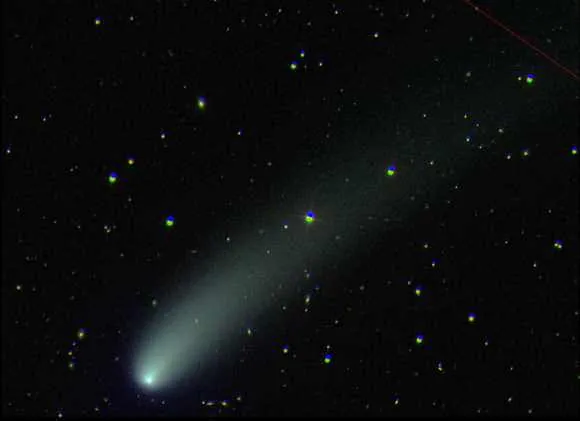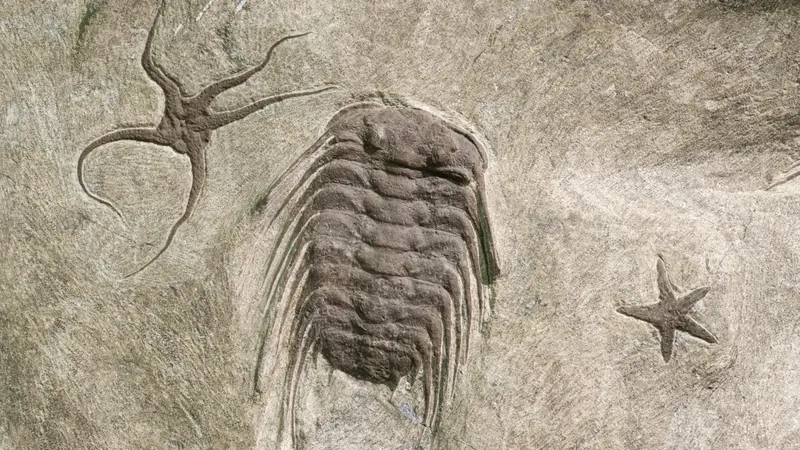
Meteor Showers: The Key to Protecting Humanity from Cometary Catastrophes!
2024-12-29
Author: Wei
The Celestial Dilemma: Cometary Threats and Their Significance
For centuries, comets have sparked wonder and dread among humans. Known for their fearsome appearances, they have inspired artists and signaled crises throughout history. These frigid remnants from the early Solar System are not just beautiful phenomena; they hold essential clues about our cosmic origins that date back nearly 5 billion years. To unveil these mysteries, scientists must identify and study these celestial wanderers, which is precisely what a groundbreaking team of researchers is doing. They have devised an innovative technique to locate comets based on data from meteor showers, enabling them to evaluate any potential threats these cosmic bodies may pose to Earth!
Understanding Comets: Nature's Dirty Snowballs
Comets, often dubbed "dirty snowballs," are unique celestial objects that orbit the Sun in highly elliptical paths. Comprising dust, gas, and water ice, many of these comets originate from the Oort Cloud or Kuiper Belt, two distant regions teeming with icy bodies. Occasionally, gravitational interactions can propel these dormant chunks toward the inner Solar System, allowing us to witness them as the magnificent comets we recognize today. A fascinating aspect of these icy visitors is their tails; contrary to popular belief, the tails of comets do not trail behind as they journey through space, but rather point directly away from the Sun, driven by solar wind.
The Classification Challenge: Short-Period vs Long-Period Comets
Comets are categorized into two groups: short-period and long-period comets, the latter taking over 200 years to complete their orbits. Although the likelihood of a long-period comet colliding with Earth is slim, the consequences of such an event could be devastating. This exact concern has spurred a team of astronomers, led by the brilliant Samantha Hemmelgarn from Northern Arizona University, to publish their findings in the Planetary Science Journal. The researchers have put forward a novel method for identifying long-period comets that may pose a threat, using data gathered from meteor showers.
Innovative Research: Tracking Comets Through Meteor Showers
“This research brings us closer to effectively defending Earth,” says Hemmelgarn. Meteor showers occur when Earth passes through the debris left by a comet, providing a unique opportunity to track the parent comet's whereabouts. By studying 17 meteor showers associated with long-period comets, the team was able to calculate potential locations for these celestial objects in space.
The Importance of Early Detection: Safeguarding Humanity
By analyzing the paths of meteor showers, researchers can assess the probability of long-period comets impacting Earth during their future orbits. Their model has shown success in accurately predicting the locations, directions, and speeds of these comets. This leads to a more focused search strategy for astronomers, rather than relying solely on automated surveys that cover the entirety of the night sky.
The implications of early detection are monumental. By identifying a threatening comet well in advance, humanity gains crucial time to devise a defense strategy. Although scientists currently have no immediate cause for alarm, with extinction-level impacts potentially millions of years away, the researchers aim to provide an early warning system that could save future generations from catastrophic cosmic collisions.
Conclusion: A Bright Future for Cosmic Defense
In conclusion, as our understanding of comets deepens, the importance of monitoring these celestial bodies grows ever clearer. By utilizing meteor showers as a guide, we are one step closer to safeguarding our planet from the unknown dangers lurking beyond our atmosphere. Will this new technique revolutionize how we protect Earth? Only time will tell, but the stars are certainly aligning in our favor!




 Brasil (PT)
Brasil (PT)
 Canada (EN)
Canada (EN)
 Chile (ES)
Chile (ES)
 Česko (CS)
Česko (CS)
 대한민국 (KO)
대한민국 (KO)
 España (ES)
España (ES)
 France (FR)
France (FR)
 Hong Kong (EN)
Hong Kong (EN)
 Italia (IT)
Italia (IT)
 日本 (JA)
日本 (JA)
 Magyarország (HU)
Magyarország (HU)
 Norge (NO)
Norge (NO)
 Polska (PL)
Polska (PL)
 Schweiz (DE)
Schweiz (DE)
 Singapore (EN)
Singapore (EN)
 Sverige (SV)
Sverige (SV)
 Suomi (FI)
Suomi (FI)
 Türkiye (TR)
Türkiye (TR)
 الإمارات العربية المتحدة (AR)
الإمارات العربية المتحدة (AR)